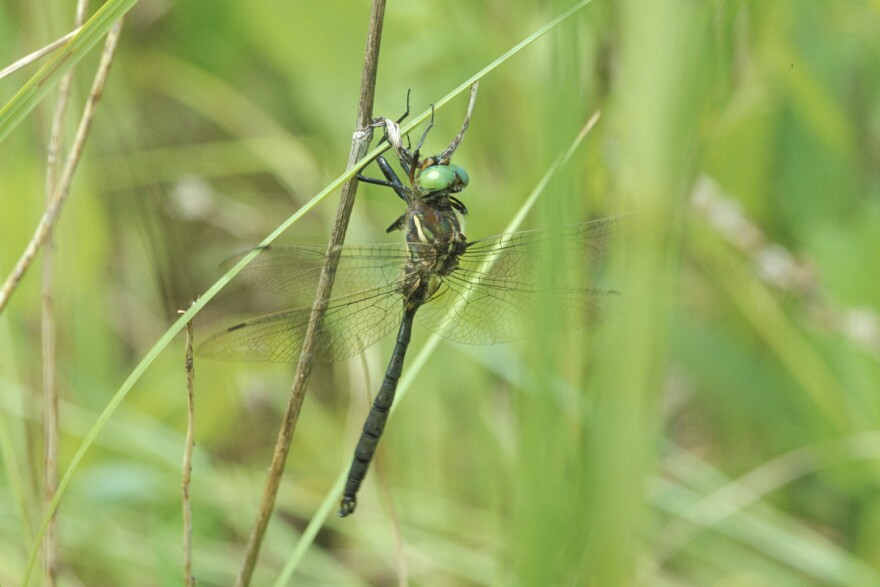July 5 - July 11
Discover Nature this week in one of Missouri’s species of concern: the Hine’s emerald dragonfly.
This rare insect was discovered in 1999 by Linden Trial, a Conservation Department biologist. She was looking for interesting insects at a natural area in Reynolds County. Her discovery dramatically increased the known range of the dragonfly, which previously had been documented in only three states: Wisconsin, Michigan and Illinois.
Surveys for the species began in earnest following Linden’s discovery. Today, the Hines’ emerald dragonfly is known in 30 locations and has been documented in 10 Missouri counties. Missouri now is known to have the largest number of populations in the U.S.
Loss of wetland habitat and impaired water quantity and quality are the most serious threats to this species’ survival. Wetland drainage and modification destroys habitat by covering or damaging suitable living sites and by reducing the flow of water that creates the marshy habitat where dragonfly larvae grow to maturity.
According to the Missouri Department of Conservation adult dragonflies emerge in late May and their flight season lasts through the summer and into October. Once adult males emerge, they establish breeding territories that they defend against other dragonflies. The adults generally feed during the day, but are most active during morning hours as they forage and capture their prey in flight along the edge of forests and near patches of vegetation.
Destruction of wetland habitat, along with the improper use or disposal of pesticides, motor oil and other chemicals, also can impair water quality.
You can protect habitat for Hine’s emerald dragonflies by fencing livestock out of marshy areas, keeping forage harvesting equipment away from wetland areas, and by leaving Ozark springs in a pristine condition.
For more information on Hine's emerald dragonflies and other Missouri species of concern, and especially to find out what you can do to help, go to mdc.mo.gov.




